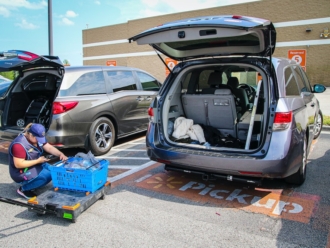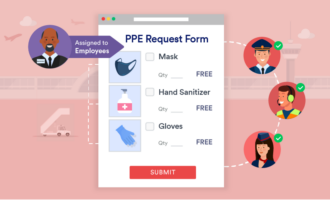The COVID-19 pandemic has changed the way people do business. Now that various governments have lifted restrictions and businesses are reopening, business owners are facing challenges. Not only do they need to protect the health of their customers, but it’s also important to ensure employees feel safe coming to work.
Creating a reopening plan can help keep the doors open while managing risk.
Screen employees and visitors
It’s important to screen every person for COVID-19 symptoms and potential contact with those who are infected. Many businesses are using daily screening forms to monitor the health of employees. The most effective way to systematize this process is by using an online form that collects data automatically.
Daily screening is important to maintain both customer safety and employee safety by minimizing the risk of spreading the virus in the workplace.
Provide sick leave for employees
Encourage employees who are sick to stay home until their symptoms are gone. If an employee starts exhibiting symptoms while on shift, let them go home immediately to prevent spreading germs among the rest of the staff.
Encourage staff members to bring any health or safety concerns to management as soon as possible. Make sure to update your employee handbook and leave policy to include COVID-19 sick leave.
Adjust work schedules
If feasible, stagger employee shifts to enable social distancing. Staggered shifts minimize the number of people coming into work at the same time. You should also stagger breaks to avoid groups of people gathering in the break room.
Remote work can reduce the number of employees in the workplace. If an employee can perform their job duties remotely, offer them a work-from-home arrangement on a part- or full-time schedule.
Institute strict hand hygiene practices
Thorough and regular handwashing can help minimize the spread of the virus. Implement hand hygiene practices, including using alcohol-based hand sanitizer and handwashing with soap and water.
Employees should wash their hands frequently when they come in contact with customers or coworkers. Everyone should also wash their hands before eating, before touching their faces, after removing protective equipment, and after using the bathroom.
Set up hand hygiene stations in prominent areas of the workplace to provide easy access to staff, customers, contractors, and visitors.
Practice good respiratory hygiene
Since COVID-19 is spread through respiratory droplets, many reopening challenges center on respiratory hygiene. Consider a mandatory mask policy for all employees and customers — based on local and national guidance. Teach staff members about the safe and proper use of masks, including care and disposal. Also, consider installing plexiglass partitions between workstations and in front of cash registers.
Implement stricter cleaning standards
Cleanliness in the workplace has always been a priority for many businesses. These cleaning standards are stricter now, with a focus on sanitizing commonly touched surfaces such as doorknobs, countertops, and more.
Businesses should have detailed cleaning schedules in place. Consider creating custom cleaning checklists to ensure everyone adheres to the schedule throughout the day. Another option is to use Jotform checklists to monitor cleaning supplies that you need to replenish.
Use social distancing strategies
If customers are present at your business, mark spots on the floor where they can stand six feet away from each other. Limit the number of people inside the building at all times. If possible, offer curbside pickup and drive-through services to reduce the number of people coming into the store. The World Health Organization recommends limiting the density of people in the building to no more than one person every 10 square meters (107.6 square feet).
Also, encourage social distancing by spacing out chairs and tables in dining areas and desks in offices. Limit direct physical contact between employees, customers, and visitors. For example, discourage employees from shaking hands, touching, or hugging others.
Sell products and services online
Consider ways to adjust business systems by offering products and services online. This pandemic is an opportunity for business owners to reassess current practices. In-person sales limit business growth, especially if states enforce stricter lockdown measures again in the future. Protect your business by incorporating online sales options in addition to in-person offerings.
Train and educate staff
Don’t assume that staff members know the current health recommendations. Be proactive about increasing COVID-19 awareness through digital communication, video training, and conversations. Emphasize the importance of good hygiene and safety practices to protect both workers and customers.
Other COVID-19 forms and tools
Jotform offers a variety of other form templates for COVID-19 that make it easier to keep your business open through this pandemic. Using digital forms can help your business thrive as you work through these unique reopening challenges.
































































































Send Comment: